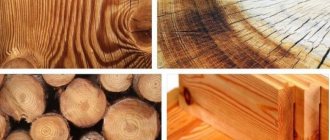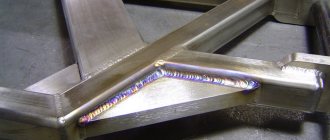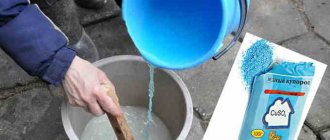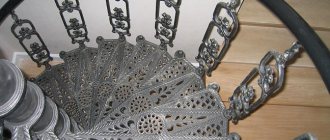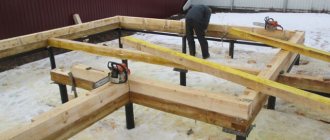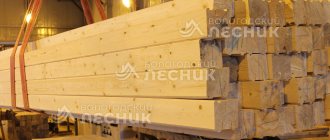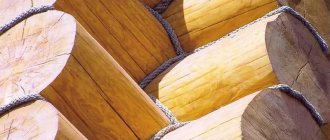The effect of moisture on wood is the main reason for its destruction. Moisture in wood fills cell cavities and intercellular spaces and can be in the form of capillary fluid. This water, filling the vessels of wood, contains various salts that are necessary for the life of the tree. Colloidally bound water, permeating the cell walls, is retained in the intermicellar spaces. Finally, chemically bound water is part of the individual substances that make up wood.
Appearance of wood
It is characterized by the following properties: color, gloss, texture and macrostructure.
The color of wood is understood as a certain visual sensation, which depends mainly on the spectral composition of the light flux reflected by it. Color is one of the most important characteristics of the appearance of wood. It is taken into account when choosing species for interior decoration, making furniture, musical instruments, artistic crafts, etc.
The color of wood depends on the species, age of the tree, and the climate of the area where it grows. Wood can change color when exposed to air and light, when damaged by fungi, as well as when exposed to water for a long time. However, the color of many breeds is so characteristic that it can serve as one of the signs for their recognition.
Gloss is the ability of wood to directionally reflect light. The wood of oak, beech, white acacia, and velvet tree has the greatest shine among domestic species; from foreign ones - satinwood and mahogany (mahogany) wood.
Texture is a pattern formed on the surface of wood as a result of cutting anatomical elements (annual layers, medullary rays, vessels).
To assess the quality of wood by appearance, characteristics such as the width of annual layers and latewood content are used.
The width of annual layers is the number of layers per 1 cm of a segment measured in the radial direction on the end surface of the sample.
The latewood content is determined by the ratio (in percentage) between the total width of the latewood zones and the total length (in the radial direction) of the measurement area, which includes an integer number of layers.
The importance of humidity in the construction and renovation industry
Humidity indicators affect a number of operational features of lumber:
- shrinkage and warping of wood;
- ability to withstand temperature changes;
- protection from insects, fungi, mold and other biological factors;
- durability;
- aesthetic characteristics;
- thermal insulation properties.
It is important to take this parameter into account when choosing the optimal material for performing a particular type of work. Mistakes are fraught with unpleasant consequences both at the construction stage and during subsequent operation.
Thermal properties
Thermal properties include heat capacity, thermal conductivity, thermal diffusivity, and thermal expansion.
Heat capacity. An indicator of the ability of wood to accumulate heat is the specific heat capacity C, which is the amount of heat required to heat 1 kg of wood mass by 1 (0) C. The specific heat capacity for all species is the same and for absolutely dry wood it is (FORMULA). As humidity increases, heat capacity increases.
Thermal conductivity is a property that characterizes the intensity of heat transfer in a material. The thermal conductivity coefficient (FORMULA) increases with increasing temperature, humidity and density. Along the fibers (SYMBOL) 2 times more than across.
Thermal diffusivity characterizes the ability of wood to equalize temperature throughout its volume.
Thermal expansion is the ability of wood to increase its linear dimensions and volume when heated. The coefficient of thermal expansion of wood is 3-10 times less than that of metal, concrete, and glass.
4.Electrical properties
Electrical conductivity is the ability of wood to conduct electric current, which is inversely related to electrical resistance.
Dry wood is a dielectric. As wood moisture content increases, resistance decreases. A particularly sharp decrease (tens of millions of times) in resistance is observed with an increase in the content of bound water. A further increase in humidity causes a drop in resistance only by tens or hundreds of times. This explains the decrease in the accuracy of determining humidity by electric moisture meters in the area above Wpn.
Electrical strength is the ability of wood to resist breakdown, i.e. reduced resistance at high voltages.
Dielectric properties characterize the behavior of wood in an alternating electric field. Indicators: dielectric constant and loss tangent.
The dielectric constant is equal to the ratio of the capacitance of a capacitor with a wood gasket to the capacitance of a capacitor with an air gap between the electrodes. This figure for dry wood is 2-3.
The dielectric loss tangent characterizes the portion of the supplied current power that is absorbed by wood and converted into heat.
Piezoelectric properties are manifested in the fact that under the influence of mechanical forces, electrical charges arise on the surface of wood.
Benefits of Siberian larch
Scientists have determined that there is a connection between the presence of moisture in wood fibers and the productivity of the plant itself. The ratio of these two parameters determines the water consumption coefficient. So some rocks use more moisture to create organic matter than others. It is enough to compare water consumption indicators to understand which wood is wetter and requires additional processing in the production of lumber.
Oak consumes 340 kg of water to create 1 kg of photosynthesis products, pine - 300, and Siberian larch only 260. This feature makes larch wood as dry as possible during harvesting and resistant to moisture during operation. During the aging process, materials made from this unique tree acquire waterproofing properties.
Wood moisture content and properties associated with its change
To quantitatively characterize the water content in wood, an indicator is used - humidity. Wood moisture is understood as a percentage ratio of the mass of water to the mass of dry wood: W = (m - m0) / m0 * 100, where m is the initial mass of the wood sample, g, and m0 is the mass of the absolutely dry wood sample, g.
Humidity measurement is carried out by direct or indirect methods. Direct methods are based on the extraction of water from wood in one way or another, for example by drying. These methods are simple, reliable and accurate, but have the disadvantage of a rather lengthy procedure. Indirect methods based on measuring other physical properties that depend on the water content in wood do not have this drawback. The most widely used are conductometric electrical moisture meters that measure the electrical conductivity of wood. However, these methods also have their drawbacks: they give reliable readings in the range from 7 to 30% and only at the site of insertion of needle contacts.
There are two forms of water contained in wood: bound and free. Bound water is found in cell walls, and free water is contained in cell cavities and intercellular spaces. Bound water is retained mainly by physicochemical bonds; a change in its content significantly affects most of the properties of wood. Free water, held only by mechanical bonds, is removed more easily than bound water and has less effect on the properties of the wood.
When testing to determine the physical and mechanical properties of wood, it is conditioned, leading to normalized humidity. If there are no special notes, then the figure is 12%.
In practice, wood is classified according to the degree of moisture:
wet, W > 100%, kept in water for a long time; freshly cut, W = 50-100%, retaining the moisture of the growing tree; air-dry, W = 15-20%, kept in the open air; room-dry, W = 8-12%, kept in a heated room for a long time; absolutely dry, W = 0, dried at a temperature of t=103±2°C.
Manufacturing standards
An experienced builder, an expert in the field of landscape design, facade cladding or interior decoration can determine what moisture content lumber should be for performing various types of work. Many factors are taken into account - from the dimensions of the structure to climatic conditions and wood species.
It is enough for the average consumer to know that the moisture content of lumber determines the grade of lining, plank or timber. The characteristics of wood are checked for compliance with the GOST 8486-86 standard, which states that products of grades 1-3 should not have values higher than 22%. If softwood lumber has a moisture content above this value, a mandatory stage of post-production processing is the use of special antiseptic agents.
In addition, finished profiled products made from natural wood must comply with GOST 8242. According to the standard, the moisture content of floor beams should not exceed 20%, flooring and boards for interior decoration - 12%, lumber for exterior cladding - 15%. A deviation from the standards of +/-3% is allowed.
Protection of wooden structures from decay and decay
Protecting wooden structures from decay and decay is of utmost importance to ensure their required durability in all operating conditions.
Rotting is the destruction of wood by the simplest plant organisms - wood-destroying fungi, for which it is a nutrient medium. Some forest mushrooms infect trees that are still growing and drying out in the forest. Warehouse mushrooms destroy timber during storage
them in warehouses. House mushrooms - merulius, koniophora, poria, etc. - destroy the wood of building structures during their operation.
Fungi develop from microscopic germ cells called spores, which are easily transported by air movement. Germinating, spores in the form of thin threads-hyphae, which are woven into cords and films-mycelium, form the fruiting body of the fungus - a source of new spores. The hyphae of wood-decaying fungi, penetrating into the wood, form holes in the cell membranes and then dissolve them with secreted enzymes that destroy cellulose. In this case, the wood turns brown, becomes covered with cracks and breaks up into prismatic pieces, completely losing its strength.
Rotting as a result of the vital activity of plant organisms is impossible without certain favorable conditions. The temperature should be moderately positive, not higher than 50 °C. At negative temperatures, the life of mushrooms freezes, but can resume again with warming. Fungal growth stops at higher temperatures, and at temperatures above 80 °C, fruiting bodies, mycelium and fungal spores die. The lowest moisture content of wood on which mushrooms can grow is 20%. In drier wood, the life of fungi ceases.
The presence of air is also necessary for mushroom growth. Wood that is completely saturated with water or is in iodine without access to air does not rot. It is also impossible for mushrooms to grow in environments that are poisonous to them.
Rot protection is essential for ensuring long service life of wooden structures. It consists in excluding one of the above conditions necessary for the life of fungi. In most cases, it is almost impossible to isolate wood from spores, from ambient air and positive temperatures. You can only destroy mushrooms and their spores with high temperature, prevent its humidity from rising to a dangerous level, or saturate it with substances poisonous to mushrooms. This is achieved through sterilization, structural and chemical protection of wood from rotting.
Sterilization of wood occurs naturally in the process of artificial, especially high-temperature drying. Heating wood at temperatures above 80 °C leads to the death of all house fungal spores present in it. Such wood resists rotting much longer and should be primarily used in structures. Structural protection of wood from rotting (Fig. 1.6) ensures such a mode of operation of structures,
Rice. 1.6. Structural protection against rotting: a - non-attic insulated covering; b - insulated attic floor; c — protection from condensation moisture; g - protection from precipitation; d — protection from capillary moisture; 1 - structures; 2 - thermal insulation; 3 - roof; 4 - air; 5 - vapor barrier; 6 - waterproofing in which its humidity does not exceed a level favorable for decay. Protection of the wood of enclosed spaces from moisture from precipitation is achieved by a completely waterproof roof made of high-quality materials. The roof must have the required slopes, and there should be no internal gutters or valleys. Wood is protected from moisture by capillary moisture by separating it from concrete and stone structures with layers of bitumen waterproofing. Wooden structures must rest on J foundations above the floor and ground levels. Protection of wood from moistening by air vapor is achieved by insulating its surface in rooms with a humidity of more than 75% and the release of water vapor with waterproof paints and varnishes, for example GTF-1 15, UR-175, etc.
Protecting wood from condensation moisture is very important. This moisture occurs during the cold season in the thickness of the thermal insulation layer of the enclosing structures of heated premises as a result of condensation of water vapor. This moistening occurs over a long period of time and cannot always be detected. To protect against the penetration of water vapor into the structure, a layer of vapor barrier is laid on the side of the room. The main supporting structures are placed outside the temperature difference zone or completely indoors below the thermal insulation layer or outside it, for example in a cold attic room above an insulated attic floor. Good ventilation of wood is beneficial for its natural drying during use. To do this, drying vents are made in the thickness of the structures, communicating with the outside air. Natural air vents form between the sheets of asbestos-cement roofing. Elements of the main structures should be designed without gaps and cracks where damp air can stagnate.
Chemical protection of wood is necessary in cases where its moisture during operation is inevitable. Structures operated outdoors, in the ground, in the thickness of building envelopes and in other cases, for example, structures of bridges, masts, piles, are inevitably moistened by atmospheric, ground or condensation moisture. Chemical protection of such structures from rotting consists of impregnating or coating them with antiseptic substances that are poisonous to fungi. They are water-soluble and oily.
Water-soluble antiseptics are substances that are colorless and odorless and harmless to humans, for example sodium fluoride and sodium fluoride. They are used to protect wood in enclosed spaces where people can stay and there is no danger of antiseptics being washed away with water. There are other types of water-soluble antiseptics, some of which are poisonous to humans.
Oily antiseptics are some mineral oils - coal, anthracene, shale, wood creosote, etc. They do not dissolve in water, are very poisonous to fungi, but have a strong unpleasant odor and are harmful to human health. These antiseptics are not washed out by water and are used to protect against rotting structures used in the open air, in the ground and above water.
Structures protected with oily antiseptics have been successfully used for decades in conditions where unprotected structures are destroyed by putrefactive fungi in two to three years. Antiseptics are added to wood using various methods. Impregnation of wood under pressure is most effective. In this case, wood with a moisture content of no more than 25% is kept in an antiseptic solution inside a steel autoclave under high (up to 14 MPa) pressure, as a result of which the antiseptic penetrates into it to a sufficient depth. Impregnating wood in hot-cold baths also gives sufficient effect at a lower cost. In this case, the wood is kept first in a hot and then in a cold bath with an antiseptic solution without increased pressure. Detailed instructions for protecting wood from rotting are contained in special instructions. The use of wood that is not protected from decay in conditions favorable to decay should be completely excluded.
Insect damage can also cause wood destruction. Grinder beetles are the most dangerous for wooden structures. Their larvae, feeding mainly on wood, gnaw numerous holes in it, correspondingly reducing its strength. To protect against borer beetles, only temperature and chemical methods are effective. Heating wood to temperatures above 80 °C leads to the death of these pests. Chemical protection of wood from rotting, especially with oily antiseptics, at the same time reliably protects it from grinding beetles. To exterminate beetles and their larvae in the wood of exploited structures, fumigation is used with toxic gases and by injecting solutions of toxic substances, such as hexachlorane or DDT, into the beetles' passages.
Technologies for professional wood drying
A variety of wood drying technologies are used in construction. They differ not only in the equipment used, but also in the method of transferring heat to the material that is dried.
Atmospheric drying
Atmospheric drying of wood
This is the removal of moisture from wood through the natural process of evaporation. The wood is stacked and placed in a dry, well-ventilated room so that it is washed by atmospheric air. There must be ventilated gaps between stacks.
If wood is dried in the open sun, its outer surface will heat up more than the inner surface. This can lead to various defects.
This drying method is considered inexpensive, the most gentle, and the resulting wood is more resistant to deformation. The disadvantages of this method include: long drying time (4-6 months); high final moisture content of the material (15-20%).
Chamber drying
Chamber drying of wood
This is a highly efficient wood drying technology that allows you to obtain high-quality material with the required moisture content. Lumber is loaded in stacks into forest drying chambers, where liquid evaporation occurs under the influence of a gaseous medium (flue gases, air, superheated steam). The gaseous medium transfers heat to the wood by convection.
For uniform distribution and circulation of warm air in drying chambers, axial or centrifugal fans are used. Timely removal of excess moisture allows you to avoid cracking and warping of lumber, as well as obtain high-quality material in the shortest possible time (from several hours to several days).
The undeniable advantage of this technology is: high rate of evaporation of excess moisture, low stress in the finished material, large chamber loading volume (up to 1000 m3).
Chamber drying of wood is not a cheap pleasure, so lumber dried in this way is much more expensive than naturally moist lumber. However, if you choose wood with natural humidity to build a house, you can win in money, but lose in quality, over time by filling holes between dry boards or replacing rotten structures.
Since technically dried wood is a high-quality raw material for the construction of all types of wooden structures with high protective and stable physical and mechanical properties, it is ideal for building a house.
